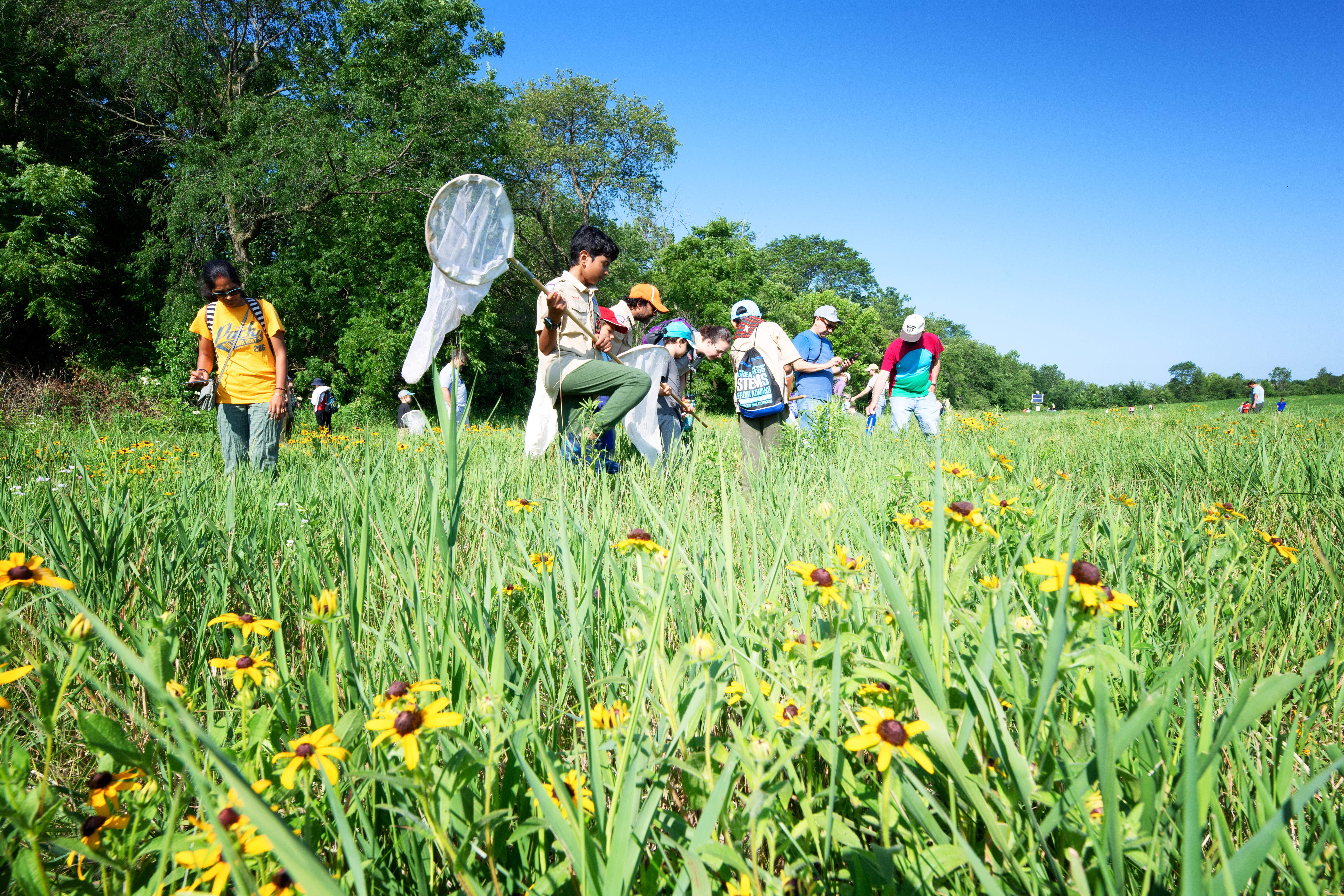College of Liberal Arts & Sciences
Ashton Prairie Living Laboratory Provides Unique Learning Opportunities

By Delaney Behning
The Ashton Prairie Living Laboratory (APLL) provides great opportunities for students, faculty, staff, and the public to engage with a living prairie right here on campus. What started as a student-led effort to establish a prairie on campus, has become an important resource for classroom research, individual and faculty research, and events such as the annual BioBlitz citizen science project. Some of the opportunities at APLL include prairie restoration, insect and botany analysis, native and invasive species identification, and groundwater surveys, all of which offer unique experiences for students and faculty.
Student Perspectives
Student perspectives from research at APLL provide great insight into the importance of having a natural resource like this available on campus.
Through the prairie restoration course, student Hallie Wirth learned about the abundant benefits prairies provide for the environment, especially in Iowa. In addition to learning about the history and relationship of indigenous groups and prairies in Iowa, Wirth spoke about the necessity of restoring prairies in Iowa. She explained the benefits she has seen and learned about through prairie restoration including decreased erosion and nutrient runoff as well as increased native plant biodiversity. Wirth explained that such a class would be great for anyone to apply to their future career or for personal interest.
Another student, Kobie Long, explained her research project at APLL that first measured temperatures to locate groundwater-surface water interactions, and second conducted aquatic macroinvertebrate (insect) surveys. Research at the prairie has been a great way for Long to get hands-on experience in a field of interest and to work with like-minded peers. Doing research at APLL has been an open-ended opportunity for Long, as it takes self-motivation, but the prairie is an excellent place to work on a research idea because it might not have been conducted there yet. Long hopes that students continue to use the prairie and for a continuation of educational events that have been held there for the benefit of both students and the public.
Eric Thomas, another student who conducts research on surface and groundwater interactions, has learned a lot from his research at the prairie. He has found it rewarding that the research is created, conducted, and presented independently. Working on the prairie has also been great for his work ethic, resiliency, and connecting with nature. Thomas thinks that APLL is a great place to learn, in any context; whether the learning takes place in an environmental, physical, or psychological context, he explains that everyone can realize the benefits of the space.
|
|
|
|
Faculty Perspectives
Faculty perspectives also provide an excellent picture of how APLL has changed over time and what opportunities exist for future projects.
Since Professor Andrew Forbes began work on the prairie, plant and insect diversity has changed dramatically. Forbes teaches BIOL:2246 Entomology Lab, where they have used the prairie to learn techniques for collecting insects that are then used to practice identification and preservation. As plant diversity has increased with the restoration efforts of prairie researchers, Forbes has also noticed a change in the insect community, as plants and insects are affected by each other. In the future, he hopes to see even more plant and botany research completed, and he suggests that everyone attend the annual BioBlitz event which is open to the public.
Another professor, Mike Fallon, instructs students in ENVS:3230, a prairie restoration course. In this, Fallon teaches about the importance of native prairie to indigenous peoples and cultures, native plants and animals of the prairie ecosystem, identification and removal of invasive species, and the use of prescribed fire or controlled burning to maintain prairie health. Like Forbes, Fallon has also seen many changes in the prairie. As prairie restoration has been their priority, native plants are able to flourish, leading to benefits of attracting insects and native pollinators. He explains that there is much to reflect on and learn from when advocating for the often forgotten native plants and animals of the prairie.
Emily Finzel, professor of EES:3300, a sedimentary geology course, takes her students to visit Clear Creek which runs along APLL. While students visit for only one lab session, Finzel notes the impact had on students, who love the labs they get to do outdoors and enjoy the prairie’s natural elements. She focuses on instructing about the modern river systems and their morphology and processes, so the creek provides hands-on experience with sediment. While upstream barriers have made it so that the researchers cannot access the deposits in the upstream area anymore, Finzel has hopes that more creek monitoring will take place in the future.
|
|
|
|
Overall, these individuals hold some important takeaways from their time working at APLL.
We must take care of the environment.
Being outside and in nature can do wonders for mental health.
Restoring the native landscape to Iowa can bring massive benefits to the environment and to people.
The prairie is a great local resource to reconnect with nature.
Students should get outside more! Professors find that the work done outside at the prairie is often the classwork most enjoyed by the students.
It is important to live peacefully alongside plants and animals and that a healthy and plentiful habitat is vital for everyone.
Get Involved
For students interested in beginning research at Aston Prairie Living Laboratory, there are multiple courses to learn about restoration, entomology, geology, and more!
